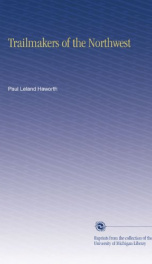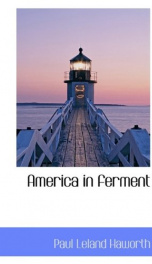George Washington: Farmer

Purchase of this book includes free trial access to www.million-books.com where you can read more than a million books for free. This is an OCR edition with typos. Excerpt from book: CHAPTER III VIRGINIA AGRICULTURE IN WASHINGTON'S DAY THE Virginia of George Washington's youth and early manhood was an imperial domain reaching from Atlantic tidewater through a thousand leagues of forests, prairies and mountains "west and northwest" to the South Sea. Only a narrow fringe along the eastern coast was settled by white men; the remainder was a terra incognita into which Knights of the Golden Horseshoe and Indian traders had penetrated a short distance, bringing back stories of endless stretches of wolf-haunted woodland, of shaggy-fronted wild oxen, of saline swamps in which reposed the whitened bones of prehistoric monsters, of fierce savage tribes whose boast was of the number of scalps that swung in the smoke of their wigwams. Even as late as 1750 the fertile Shenandoah Valley beyond the Blue Ridge formed the extreme frontier, while in general the "fall line," where the drop from the foothills tothe coastal plain stops navigation, marked the limit of settlement. At the time that Washington began to farm in earnest eastern Virginia had, however, been settled for one hundred fifty-two years. Yet the population was almost wholly rural. Williamsburg, the capital, was hardly more than a country village, and Norfolk, the metropolis, probably did not contain more than five thousand inhabitants. The population generally was so scattered that, as has been remarked, a man could not see his neighbor without a telescope or be heard by him without firing a gun. A large part of the settled land was divided up into great estates, though there were many small farms. Some of these estates had been acquired for little or nothing by Cavalier favorites of the colonial governors. A few were perfectly enormous in size, and this was particularly the rule on the "Northern Nec...
Info about the book
Author:
Series:
Unknown
ISBN:
1171638396
Rating:
5/5 (4)Your rating:
0/5
Languge:
English
Users who have this book
Users who want this book
What readers are saying
What do you think? Write your own comment on this book!
write a commentGenre
if you like George Washington: Farmer try:
Do you want to read a book that interests you? It’s EASY!
Create an account and send a request for reading to other users on the Webpage of the book!






